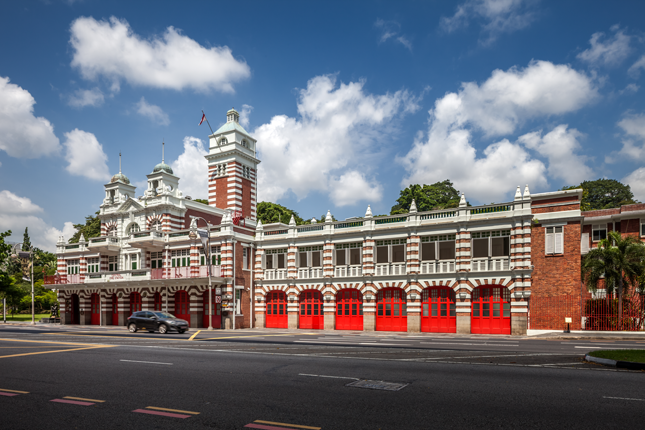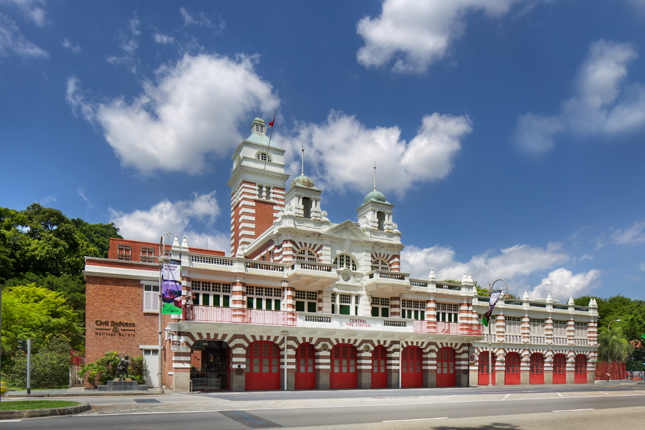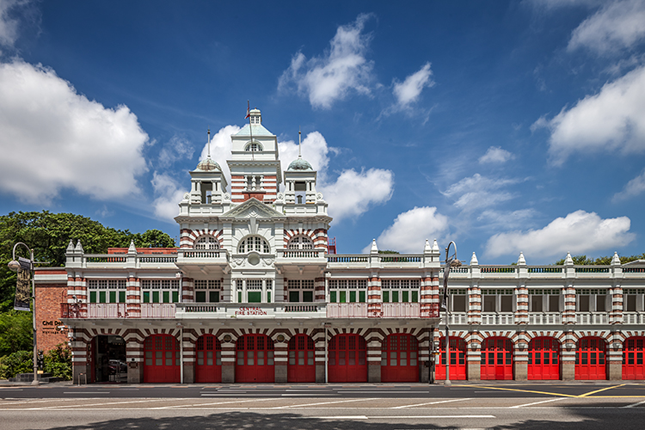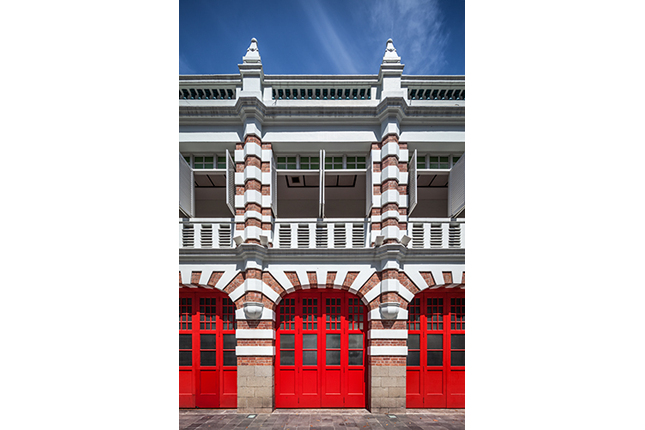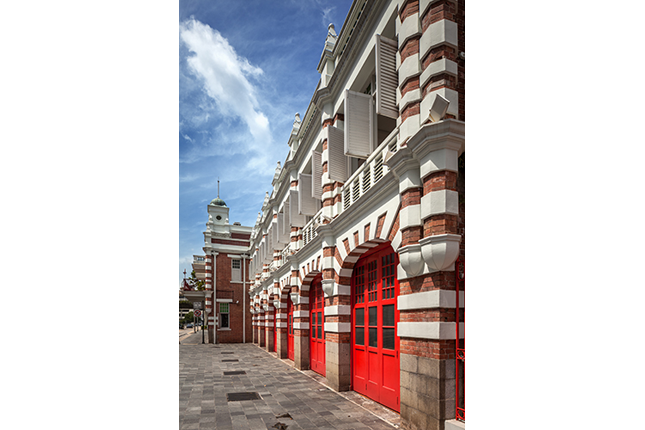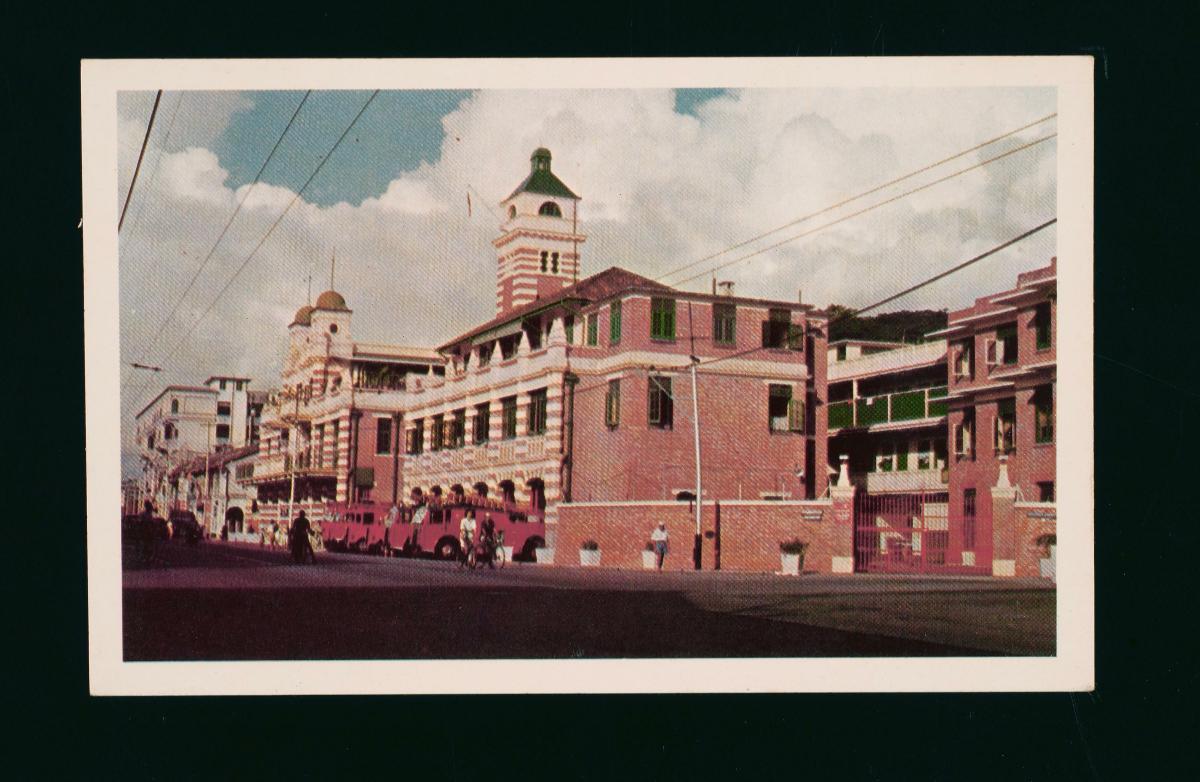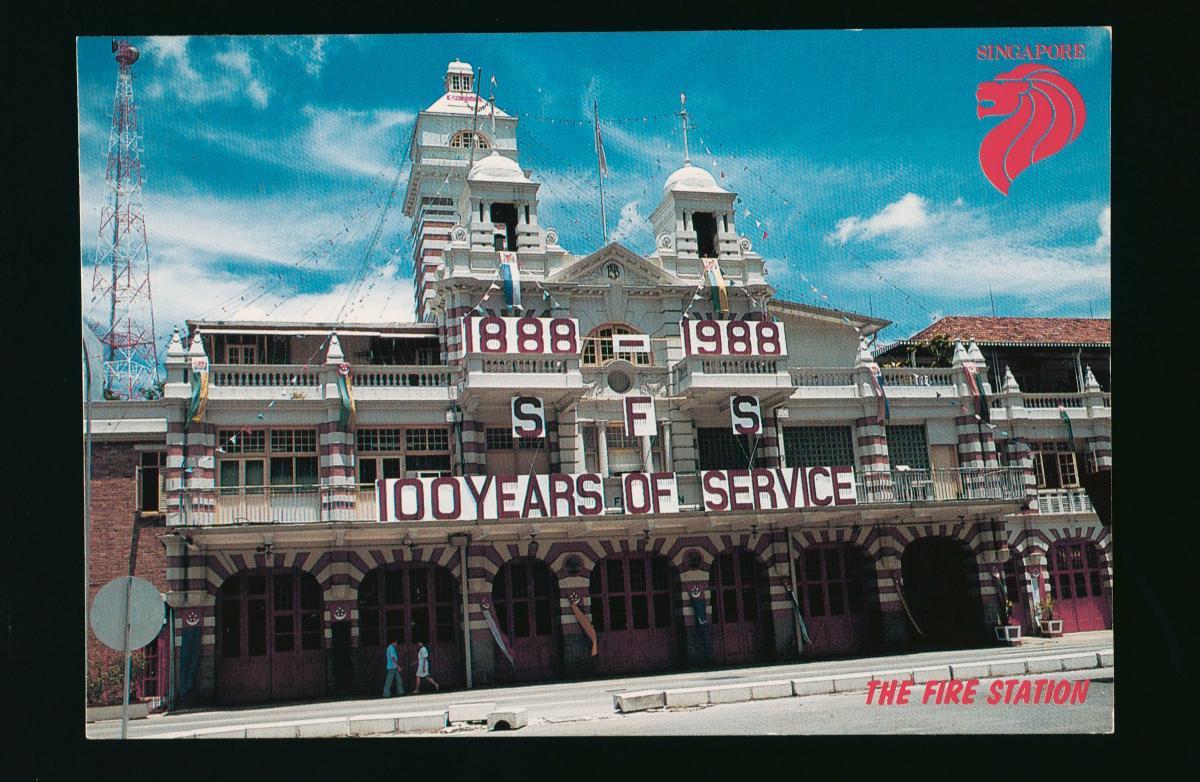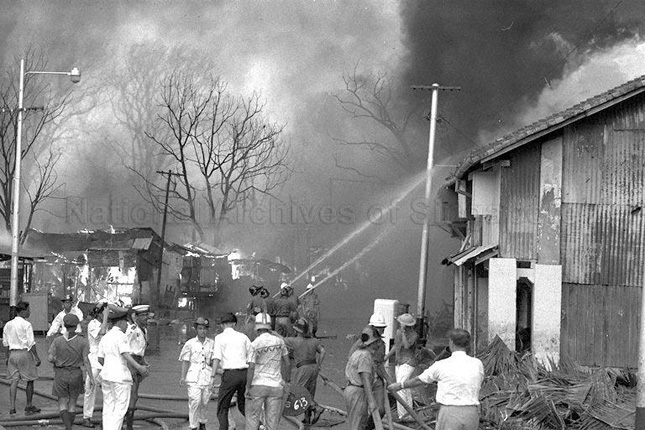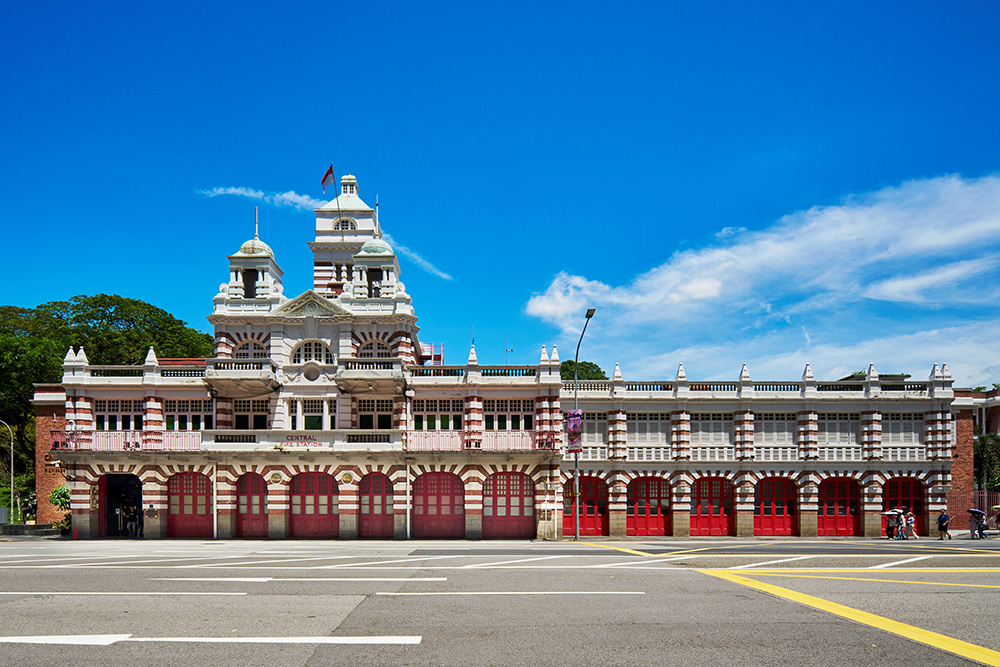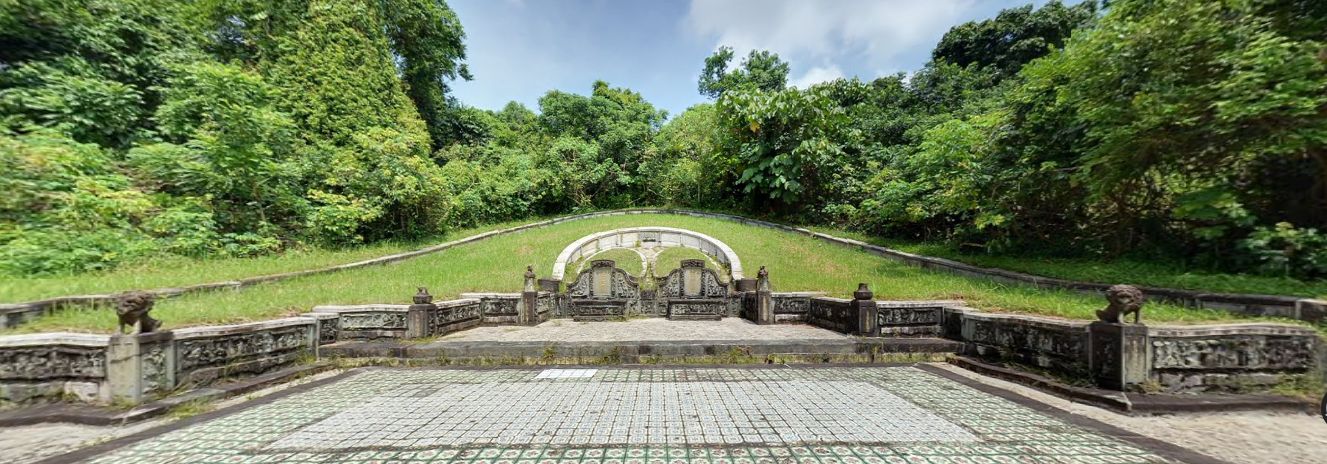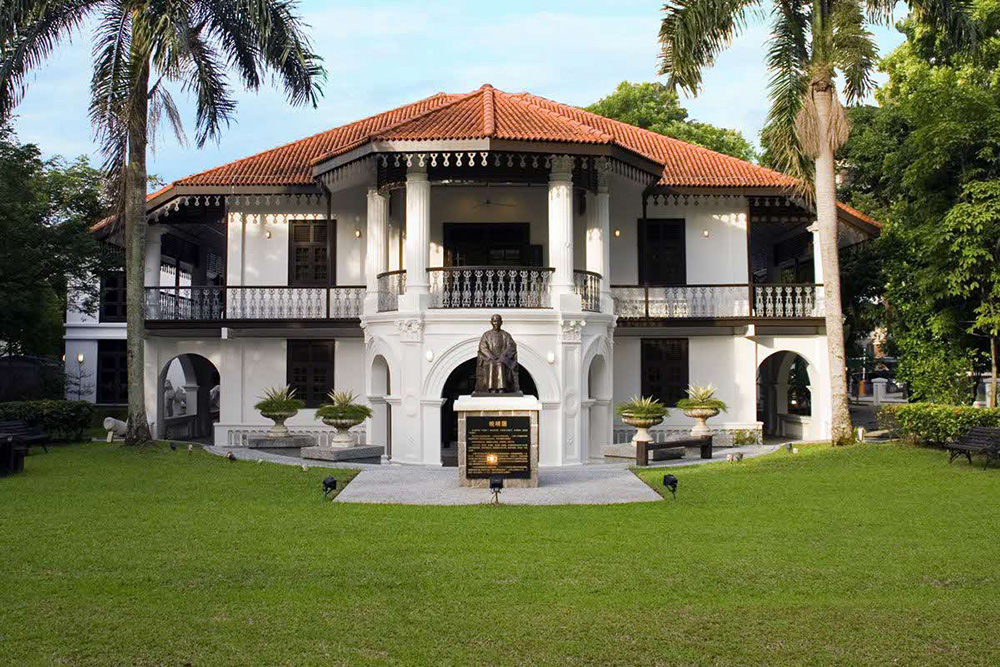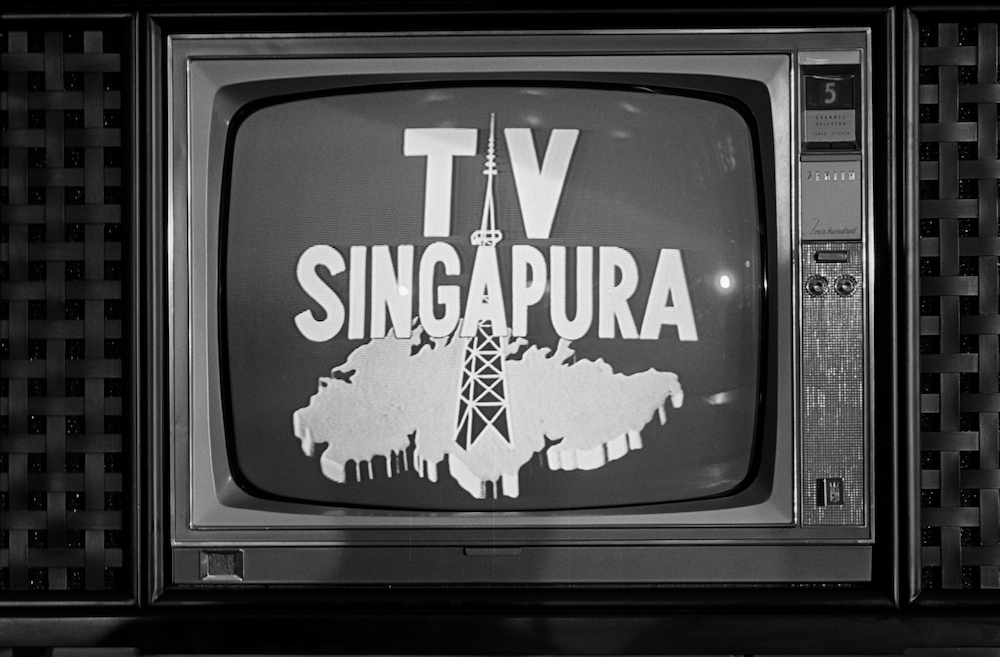The Central Fire Station is the oldest surviving fire station in Singapore. Situated not far from the Armenian Church and the Former Hill Street Police Station, the iconic building is a living monument to the local firefighting force.
Frequent Outbreaks of Fire
In nineteenth-century Singapore, fire outbreaks were rampant in Singapore and were a major problem for the British Administration. This was because many houses were built using flammable materials such as wood and attap, which posed a serious fire hazard. Moreover, their close proximity to one another also meant that fires could spread very quickly.
Early firefighting squads consisted of poorly trained men, including soldiers, convicts, and volunteers. It was only in 1888 that the first organised team of firefighters, the Singapore Fire Brigade, was established, and the first purpose-built fire station was constructed on Cross Street. G. P. Owen, then Secretary of the Singapore Cricket Club, was appointed the founding superintendent of the Singapore Fire Brigade.
New Era for the Singapore Fire Brigade
In 1904, a professional firefighter named Montague W. Pett arrived from England and succeeded Owen as Superintendent of the Singapore Fire Brigade. Under Pett’s leadership, the poorly trained firefighting force was transformed into a modern fire brigade. He championed the building of the Central Fire Station as he believed that a modern, well-equipped fire station was necessary for a town. Construction of the new fire station commenced at the foot of Fort Canning Hill on Hill Street in 1908.
The Central Fire Station was completed in 1909. It boasted a squad of fully motorised fire trucks which effectively replaced the outdated horse-drawn engines. The new fire engines were developed and produced by the famous London steam engine manufacturer Merryweathers & Sons. They greatly enhanced the efficiency of the local fire service in their response to emergencies.
In addition, the fire station also provided accommodation for the firefighters. Drills and exercises could be conducted on the large parade square within the compound.
Second World War
As the threat of war loomed, the British Administration formed the Auxiliary Fire Service in 1939 to strengthen the local firefighting force and to deal with any possible wartime emergencies such as air raids. The Central Fire Station’s red-and-white brickwork was painted over with camouflage paint in an attempt to conceal the building from enemy bomber pilots. Nevertheless, the fire station sustained numerous direct hits from falling bombs.
When Singapore fell to the Japanese in 1942, most of the fire brigade’s European members were marched off to Changi Prison as prisoners-of-war. Those who remained in the force carried on with their duties under the direction of Victor G. Donough, who served as Superintendent at the Central Fire Station during the Japanese Occupation (1942–1945).
Response to Emergencies
The Central Fire Station continued to function after the war. Firefighters based in this historic fire station were involved in various national emergencies and rescue operations that hit post-war and post-independent Singapore. These included the ravaging fires at Bukit Ho Swee in 1961 and the disastrous collapse of Hotel New World in 1986.
Architecture
Designed by William Ferguson, the building’s red-and-white rusticated façade is a distinctive characteristic of what is commonly known as ‘blood-and-bandage’ architecture. In the case of the Central Fire Station, this feature coincidentally and aptly underscores the firefighters’ work mission to rescue and save. The ‘blood’ points to the exposed red bricks on the façade, while the ‘bandage’ refers to the plaster layovers that are painted white. This architectural style was popularised during the Edwardian era (1901–1910).
Another outstanding feature of the fire station is its impressive lookout tower, which rises to a height of about 110 feet (34 metres). A fireman was always stationed in the tower to spot any outbreaks of fire in the vicinity. Flanked by twin cupolas, a triangular pediment bearing the monogram of the Singapore Fire Brigade fronts the façade’s midsection. Behind the row of bright red shutter doors are fire engines and rescue vehicles on standby for activation.
Central Fire Station Today
In 2001, the Civil Defence Heritage Gallery located in the station was opened to the public. Its exhibits provide visitors with insights into the history of the firefighting force in Singapore from its humble beginnings to the established force that it is today.
The Central Fire Station is still operational today and serves an area covering the Central Business District and Chinatown.
Our National Monuments
Our National Monuments are an integral part of Singapore’s built heritage, which the National Heritage Board (NHB) preserves and promotes for posterity. They are monuments and sites that are accorded the highest level of protection in Singapore.




